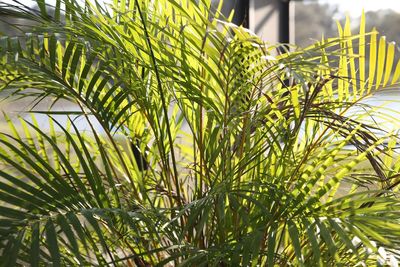Growing a Majesty Palm
While majesty palms are somewhat more demanding than most houseplants, it is possible to grow them successfully in containers. First and foremost, it’s important to select a container large enough to contain the plant’s robust root system. Well amended soil, as well as frequent treatment with fertilizer, is essential for this heavy feeding plant. One of the most common issues growers of majesty palm may encounter are yellowing leaves. Yellow majesty palm leaves are not only alarming to plant owners, but a sign that the plants are experiencing stress which could be caused by a variety of factors.
Majesty Palm Turning Yellow
If you are growing a majesty palm plant and it begins to show signs of yellowing, the following issues are most likely the problem: Light– Unlike some other shade-tolerant houseplants, majesty palms require quite a bit more sunlight to truly thrive. When growing these plants indoors, make certain to situate the plants where they are able to receive at least six hours of sunlight each day. This is especially important during the winter and low light months. Inadequate light will lead to insufficient development of new leaves, and ultimately, the demise of the plant. Moisture– When growing majesty palm, it is important that the soil is not allowed to dry out. Maintaining a consistent moisture level in potted plants is key to reducing water related stress, as well as preventing fronds from turning yellow. Dry soils and low humidity may cause leaves to dry out and drop from the plant. Conversely, keeping soils too wet will also cause harm and yellowing of the plant. Soggy soils may also contribute to the development of fungal diseases and root rot.
